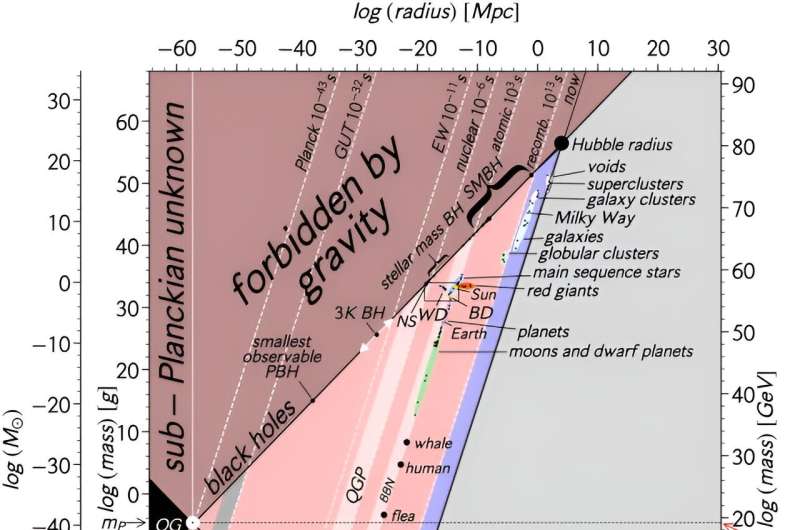This article has been reviewed according to Science X's editorial process and policies. Editors have highlighted the following attributes while ensuring the content's credibility:
fact-checked
peer-reviewed publication
trusted source
proofread
A new view of all objects in the universe

The most comprehensive view of the history of the universe ever created has been produced by researchers at The Australian National University (ANU). The study also offers new ideas about how our universe may have started.
Lead author Honorary Associate Professor Charley Lineweaver from ANU said he set out wanting to understand where all the objects in the universe came from.
"When the universe began 13.8 billion years ago in a hot big bang, there were no objects like protons, atoms, people, planets, stars or galaxies. Now the universe is full of such objects," he said.
"The relatively simple answer to where they came from is that, as the universe cooled, all of these objects condensed out of a hot background."
To show this process in the simplest possible way, the researchers made two plots. The first shows temperature and density of the universe as it expanded and cooled. The second plots the mass and size of all objects in the universe.
The result is the most comprehensive chart ever created of all the objects in the universe. The study is published in the latest issue of the American Journal of Physics.
Co-author and former ANU research student Vihan Patel said the project raised some important questions.
"Parts of this plot are 'forbidden'—where objects cannot be denser than black holes, or are so small, quantum mechanics blurs the very nature of what it really means to be a singular object." Patel said.
The researchers say the boundaries of the plots and what lies beyond them are also a major mystery.
"At the smaller end, the place where quantum mechanics and general relativity meet is the smallest possible object—an instanton. This plot suggests the universe may have started as an instanton, which has a specific size and mass, rather than a singularity, which is a hypothetical point of infinite density and temperature," Patel said.
"On the larger end, the plot suggests that if there were nothing—a complete vacuum—beyond the observable universe, our universe would be a large, low density black hole. This is a little scary, but we have good reason to believe that's not the case."
More information: Charles H. Lineweaver et al, All objects and some questions, American Journal of Physics (2023). DOI: 10.1119/5.0150209
Journal information: American Journal of Physics
Provided by Australian National University





















